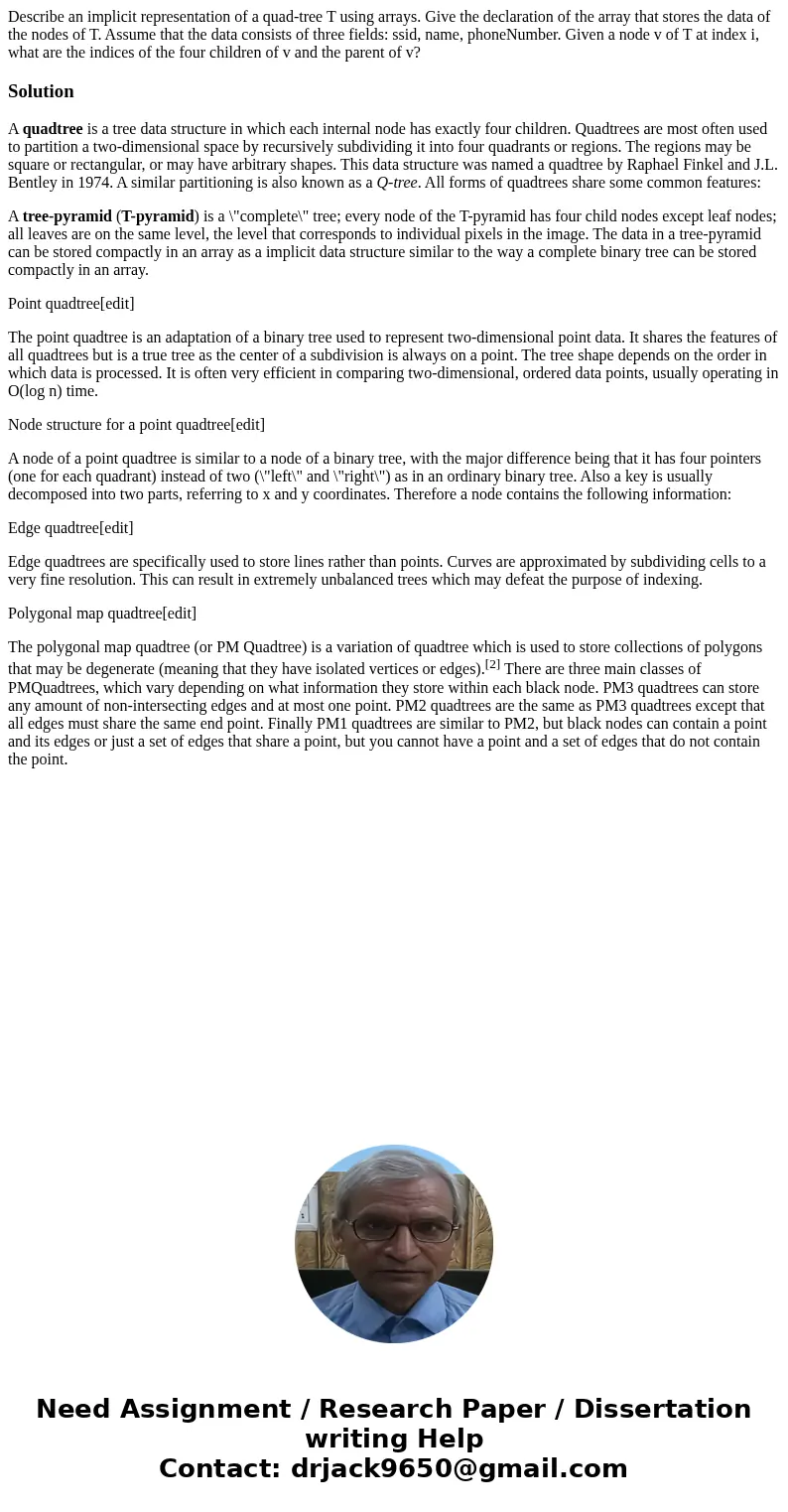Describe an implicit representation of a quadtree T using ar
Describe an implicit representation of a quad-tree T using arrays. Give the declaration of the array that stores the data of the nodes of T. Assume that the data consists of three fields: ssid, name, phoneNumber. Given a node v of T at index i, what are the indices of the four children of v and the parent of v?
Solution
A quadtree is a tree data structure in which each internal node has exactly four children. Quadtrees are most often used to partition a two-dimensional space by recursively subdividing it into four quadrants or regions. The regions may be square or rectangular, or may have arbitrary shapes. This data structure was named a quadtree by Raphael Finkel and J.L. Bentley in 1974. A similar partitioning is also known as a Q-tree. All forms of quadtrees share some common features:
A tree-pyramid (T-pyramid) is a \"complete\" tree; every node of the T-pyramid has four child nodes except leaf nodes; all leaves are on the same level, the level that corresponds to individual pixels in the image. The data in a tree-pyramid can be stored compactly in an array as a implicit data structure similar to the way a complete binary tree can be stored compactly in an array.
Point quadtree[edit]
The point quadtree is an adaptation of a binary tree used to represent two-dimensional point data. It shares the features of all quadtrees but is a true tree as the center of a subdivision is always on a point. The tree shape depends on the order in which data is processed. It is often very efficient in comparing two-dimensional, ordered data points, usually operating in O(log n) time.
Node structure for a point quadtree[edit]
A node of a point quadtree is similar to a node of a binary tree, with the major difference being that it has four pointers (one for each quadrant) instead of two (\"left\" and \"right\") as in an ordinary binary tree. Also a key is usually decomposed into two parts, referring to x and y coordinates. Therefore a node contains the following information:
Edge quadtree[edit]
Edge quadtrees are specifically used to store lines rather than points. Curves are approximated by subdividing cells to a very fine resolution. This can result in extremely unbalanced trees which may defeat the purpose of indexing.
Polygonal map quadtree[edit]
The polygonal map quadtree (or PM Quadtree) is a variation of quadtree which is used to store collections of polygons that may be degenerate (meaning that they have isolated vertices or edges).[2] There are three main classes of PMQuadtrees, which vary depending on what information they store within each black node. PM3 quadtrees can store any amount of non-intersecting edges and at most one point. PM2 quadtrees are the same as PM3 quadtrees except that all edges must share the same end point. Finally PM1 quadtrees are similar to PM2, but black nodes can contain a point and its edges or just a set of edges that share a point, but you cannot have a point and a set of edges that do not contain the point.

 Homework Sourse
Homework Sourse